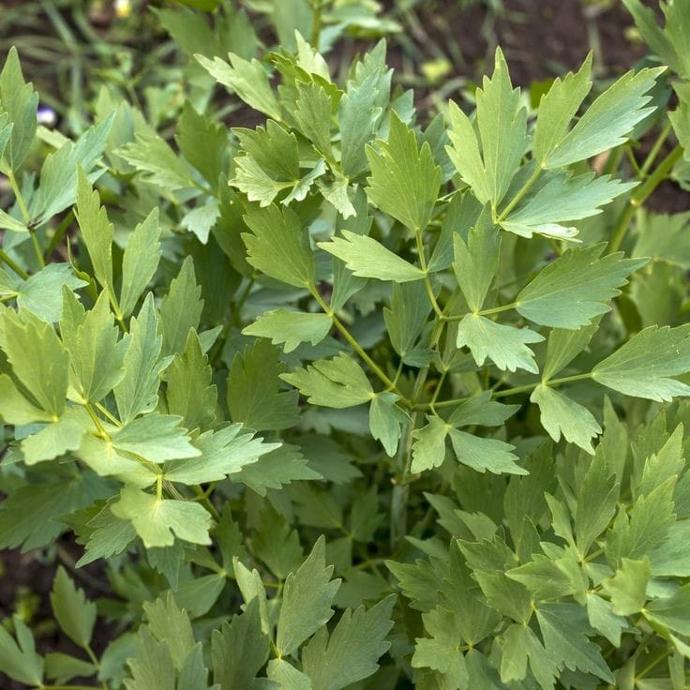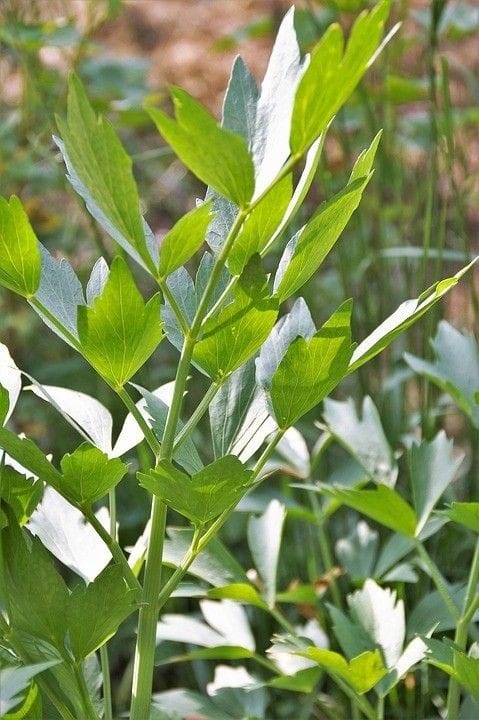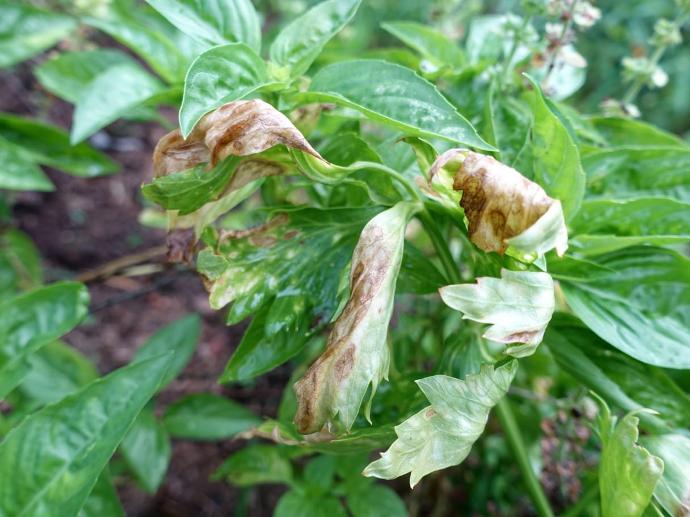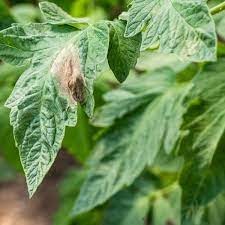Lovage Plant
Lovage, a perennial, prefers well-drained, fertile soil and partial shade to full sun. It's frost-tolerant, fast-growing, and benefits from regular watering.

Habit
Perennial
Height
1 to 1.5 m
Growth
Fast
Soil
Well-drained, Loamy
Shade
Partial shade to Full Sun
Moisture
Moist
Edible
Yes
Medicinal
Yes
Origin
Europe
Climatic Condition
Temperate, Subtropical
Temperature (°)
15°C to 25°C
Humidity (%)
50% to 70%
Potting media
50% Loam, 30% Sand, 20% Compost
Fertilizers
Organic Fertilizer
Watering
Regular watering
Plant Weight
10 to 20 kg
Flowering Time
Spring to Summer
Soil Ph level
6.0 to 7.5
Water Ph level
6.0 to 7.0
Soil EC
0.5 to 0.8 mS/cm
Yield Per Plant
163-474 grms
NPK ratio
04:03:02
life Span
2 to 4 years
Health Benefits
Medicinal, Digestive Aid
Suggested Grow Media or Potting Mix ?
50% loamy soil, 30% compost, 20% sand
Suggested Fertigation/Fertilizers
Fertilize every 2 weeks with a balanced fertilizer.
Common Diseases and Remedies
Cercospora Leaf Spot , Early Blight .
Fairly defined as margins and brown black tan and reddish brown centres . Water soaked , Often angular shaped lesions on the leaves .
Crop rotation, neem cake as soil amendment
HEALTH BENEFITS
Aids digestion, supports kidney function, and has anti-inflammatory effects.
What Is An Lovage ?
Lovage (Levisticum officinale) is a perennial herb belonging to the Umbelliferae family, native to southern Europe and parts of Asia. Used in cooking and medicine since ancient times, it has a celery-like flavour and a slightly bitter, earthy taste. Lovage can grow up to 2 meters tall and is characterized by large leaves and yellow-green flowers that bloom in summer. It is often grown in herb gardens and used in soups, stews, and sauces. Its seeds and roots are also used in traditional medicine for a variety of ailments, including digestive disorders and rheumatism.

What Are The Different Types Of Lovage ?
1. Common Lovage
This is the standard variety of Lovage, commonly grown for culinary and medicinal purposes. Common lovage typically grows 3 to 6 feet tall and has bright green celery-like leaves with a strong flavour reminiscent of celery or parsley.
2. Gold Lovage
Gold Lovage is a cultivar prized for its golden yellow foliage that provides a striking contrast to the garden. It has the same flavour and culinary uses as common lovage, but its bright colour adds visual interest.
3. Variegated lovage
Variegated lovage has attractive variegated leaves, often with creamy white or yellow margins. This variety provides the same culinary and medicinal benefits as lovage while adding a decorative touch to herb gardens and borders.
4. Giant lovage
As the name suggests, giant lovage tends to grow larger than common lovage, with taller stems and broader leaves. It can reach up to 2.1 meters in height and is prized for its vigorous growth and lush foliage.
5. Compact Lovage
Compact Lovage is a smaller, more compact variety suitable for container gardening and small spaces. It has a more modest growth habit but has the same aromatic foliage and culinary versatility as other lovage varieties.

How to Care Lovage Plants ?
1. Location
Lovage prefers cool, moist growing conditions. Lovage grows best in cool, humid climates. It is a hardy plant that tolerates low temperatures and can grow in USDA hardiness zones 4 through 8. Lovage can be grown in pots or directly in the ground. If growing in a pot, make sure the pot is large enough to accommodate the plant's root system. For soil, a well-drained location is best.
2. Sunshine
Lovage prefer full sun for at least 6 hours per day. This allows the plant to grow vigorously and produce more fragrant leaves. Lovage can tolerate some shade, but if it doesn't get enough light it will become leggy and its leaves won't grow as well. Lovage is sensitive to deep shade, so it is not recommended to plant it in areas that do not receive direct sunlight.
3. Soil
Soil must be rich in organic matter to retain moisture and provide essential nutrients for plant growth. Before planting lovage, amend the soil with well-rotted compost, aged manure, or other organic matter to improve fertility and structure. Also, make sure the soil is well-drained to avoid waterlogging that can cause root rot and other problems. If your soil is heavy or compacted, consider adding coarse sand or perlite to improve drainage.
4. Hydration
Lovage likes to be kept moist, but not too wet. Watering 2-3 times a week is sufficient, but adjust according to weather conditions. Check the soil moisture periodically by sticking your finger into the soil. The soil should be moist but not soggy. If the soil is too wet, the plant will develop root rot, which can be fatal. When watering your lovage, it is recommended to water thoroughly so that the water reaches all the way to the roots. Avoid watering the leaves as this can encourage fungal growth.

5. Nourishment
Lovage is relatively easy to care for, but providing additional nutrients through fertilization will encourage vigorous growth and flavour development. Applying a balanced all-purpose fertilizer during the spring budding period will support foliage health and the bold flavour of lovage. Applying a layer of mulch around the base of your lovage plants will help conserve soil moisture, suppress weeds, and regulate soil temperature.
6. Issues
Lovage plants may be susceptible to fungal diseases such as mould and rust. These diseases cause white or brown spots on the leaves and can lead to leaf drop. Aphids, spider mites, and slugs can damage lovage plants. These pests can cause leaf yellowing, browning, and stunted growth. To get rid of pests, use insecticidal soap or natural insecticides. Lovage plants need proper nutrients to grow healthily. Deficiencies in nutrients such as nitrogen, potassium, and magnesium can cause yellowing of leaves and stunted plant growth.
What are the Benefits of Lovage ?
Lovage leaves have a strong flavour similar to celery and can be used to enhance the flavour of soups, stews, and other savoury dishes. Lovage can be used as a substitute for celery in cooking, and the seeds and roots can also be used in cooking. Lovage has been used for centuries to treat various ailments. It is thought to have anti-inflammatory, diuretic, and digestive properties, and is used to treat conditions such as indigestion, constipation, and urinary tract infections. Lovage is rich in vitamins and minerals such as vitamins A and C, potassium, calcium, and iron. Adding lovage to your diet can increase your nutrient intake. Lovage flowers attract bees and other pollinators to your garden, helping to increase pollination rates and increase fruit and vegetable yields. Lovage has an attractive, bushy nature that can add a visual highlight to your garden. The large green leaves and yellow-green flowers make a beautiful addition to garden flower beds and potted plants.

FAQs About Growing Lovage
1. How tall does lovage grow ?
Lovage plants reach a height of 0.9 to 1.8 meters under optimal growing conditions. However, it can grow taller in fertile soil with plenty of sunlight and moisture.
2. How do you use lovage in cooking ?
Lovage leaves and stems can be used fresh or dried to add flavour to soups, stews, salads, sauces, and savoury dishes . You can also mix it with oil, vinegar, or herbal tea to enjoy its unique herbal taste.
3. Is lovage easy to grow ?
Yes, lovage is relatively easy to grow, especially in temperate climates with well-drained soil and plenty of sunlight. As a hardy perennial, it requires little care once established.
4. Can lovage be grown in containers ?
Yes, lovage can be grown in containers or pots, making it suitable for small gardens, balconies and terraces. Choose a large, well-drained container and plant your lovage in well-drained soil.
5. What does lovage taste like ?
Lovage tastes similar to celery, but with a stronger aroma of parsley and anise. Both the leaves and stems are aromatic, making it a versatile herb for cooking.


